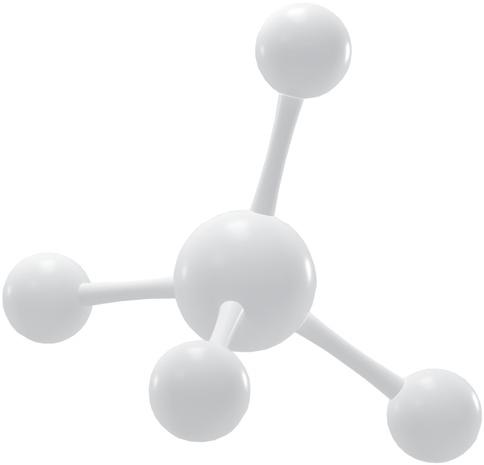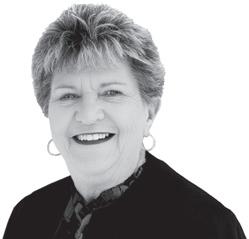
4 minute read
COUNTERING COVID-19
From basic research to clinical implementation
Elucidating COVID’s Impact
Advertisement
Annie Wong-Beringer and colleagues conducted a detailed analysis of nonelderly adults hospitalized with COVID-19 between March and November 2021 to identify age-differentiated characteristics and outcomes between two waves of the pandemic: the original Alpha form and the more severe Delta variant. Unvaccinated individuals required prolonged hospital stays with more than half remaining on oxygen at the time of hospital discharge. Risk for severe disease and worse outcomes increased substantially with every 10-year increment between ages 25 and 64. The study demonstrated that the risk of severe disease and death had been underappreciated in unvaccinated nonelderly adults, especially the middle-aged cohort, despite their being younger and having fewer comorbid conditions. The study emphasized the importance of prioritizing vaccination efforts for this population, particularly in light of the impact on children and families. Some 65% of children facing orphanhood as a result of COVID-19 belong to families of racial and ethnic minorities. The study also noted the toll on household income and food security in families of adult caregivers with lingering health issues from long COVID.
Computer illustration of a lipid nanoparticle mRNA vaccine, a type of vaccine used against COVID-19 and influenza. USC Mann researchers have worked to combat COVID-19 on many levels—from blocking the disease’s impact to recommending appropriate policy interventions.

Blocking Virus Entry
Stan Louie and Isaac Asante joined with USC colleagues in multidisciplinary research to develop a compound for blocking the virus from entering through membranes in the nose, eyes and mouth. The coronavirus latches on to structures on the surfaces of cells before burrowing in to replicate and spread. Lipid rafts, which are laden with cholesterol and play an important role in cellular signaling, are especially vulnerable to being hijacked.
The team’s compound, called cyclodextrin, removes cholesterol from cellular membranes to fight off this viral piracy. The discovery could not only help stop COVID-19 but also may revolutionize the prevention of numerous other infectious diseases.
Managing Drug Interactions


Although an effective treatment for cystic fibrosis, the combination therapy Trikafta can trigger drug interactions in patients taking CYP3A inducers and inhibitors for COVID19, HIV and other infections. Paul Beringer uses physiologically based pharmacokinetic (PBPK) computer modeling to develop dosing guidance for avoiding these adverse interactions. His collaborators include PBPK expert Lisa Almond of the modeling software company Simcyp. Beringer has garnered funding from the Cystic Fibrosis Foundation for a clinical trial to validate the results
51% 9 MILLION OF LIVES LOST IN FIRST YEAR OF THE PANDEMIC WERE AMONG ADULTS AGES 24 TO 64 YEARS OF LIFE LOST IN THE FIRST YEAR OF THE PANDEMIC of PBPK simulations that show that the CYP3A4 inducer rifabutin can be successfully administered with dose-adjusted Trikafta for cystic fibrosis patients who also need treatment for mycobacterial lung infections. This work is providing essential guidance for managing drug interactions with Paxlovid— a widely used COVID-19 treatment—in vulnerable populations.

Uncovering COVID’s Overlooked Toll
At first glance, statistics appear to support the common perception that COVID-19 does its worst damage among the elderly and vulnerable. But these grim numbers mask another reality—and focusing on them has biased policy decisions and individual choices. Schaeffer Center researchers found that elderly and younger-adult populations have borne a significant burden from the pandemic when measured by years of life lost. In total, over 9 million years of life were lost in the first year of the pandemic, with adults ages 25 to 64 accounting for 51% of these lost birthdays. The analysis, which leveraged the Schaeffer Center’s Future Elderly Model and Future Adult Model, was published in Annals of Internal Medicine.
“The focus on older people passing away from COVID misses the substantial burden COVID has imposed on younger people with chronic conditions like obesity,” Darius Lakdawalla says. “Many people have emphasized that protections like lockdowns and vaccinations ought to focus on the old and the vulnerable. However, our findings contradict the belief that this is a pandemic primarily of the elderly.”

Addressing a Ventilator Shortage
At the height of the pandemic, the potential shortage of ventilators became a major source of concern, as many hospitalized COVID-19 patients require aid to breathe. Susan Bain is part of a team that developed a novel ventilator system. The technology aims to co-ventilate up to three patients at a time. Regulatory sciences graduate student Daniel Stemen served as a team leader for the testing and qualification of the new device, which is undergoing consideration by the Food and Drug Administration (FDA).
Providing Evidence on Health and Economic Costs

Early in the pandemic, the USC Schaeffer Center for Health Policy & Economics launched a comprehensive collection of information and new research on its website about the implications of the virus on health and the economy. Experts at the center— a partnership of the USC Mann School of Pharmacy and Pharmaceutical Sciences and the USC Price School of Public Policy— continue weighing in on short- and long-term approaches to addressing the impact of COVID-19. Geoffrey Joyce—chair of the Mann School’s Department of Pharmaceutical and Health Economics and Schaeffer Center director of health policy—called attention early on to the danger of shortages posed by supply chains, as the vast majority of raw materials that go into prescription drugs are produced overseas, mostly in China and India.


Tackling Testing
With testing reagents in short supply and the high cost of repeatedly testing large portions of the population, Schaeffer Center experts suggested an innovative strategy. Darius Lakdawalla—Quintiles Chair in Pharmaceutical Development and Regulatory Innovation—and colleagues proposed the use of pooled testing. The method combines individual samples and processes them in batches instead of running tests on each individual in a company or school. The team’s analysis showed that this approach could reduce testing costs by at least half, which could add up to tens of billions of dollars saved, even when factoring in concerns about reliability and testing errors.
Deploying Vaccines
Richard Dang led the City of Los Angeles COVID-19 Vaccination Program—a partnership with USC Mann School, Los Angeles Mayor Eric Garcetti, the Los Angeles Fire Department, Carbon Health and Curative. As president of the California Pharmacists Association, he chaired the association’s COVID-19 task force and also served on the California governor’s task force. Under his leadership, the Dodger Stadium vaccination site was the nation’s largest, inoculating more than 1 million people soon after vaccines became available. Dang authored a study on the pharmacists’ role in the implementation and distribution of COVID-19 vaccines for the Journal of Contemporary Pharmacy Practice.
+ MILLION 12
NUMBER OF PEOPLE RECEIVING COVID-19 INOCULATIONS FROM MANN SCHOOL VOLUNTEERS BETWEEN DECEMBER 2020 AND APRIL 2021
THOUSAND
DAILY VACCINATIONS OVERSEEN BY MANN SCHOOL VOLUNTEERS AT DODGER STADIUM, THE NATION’S LARGEST COVID-19 VACCINATION SITE








